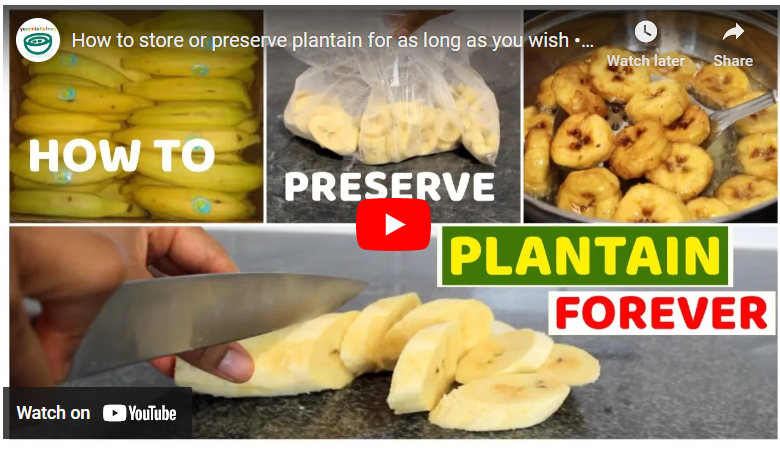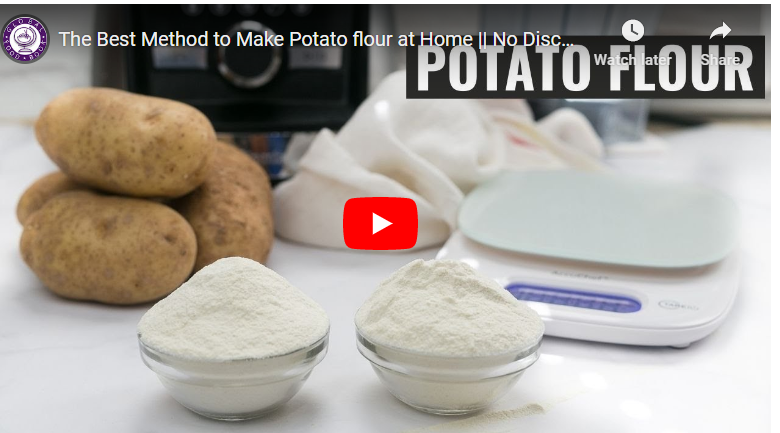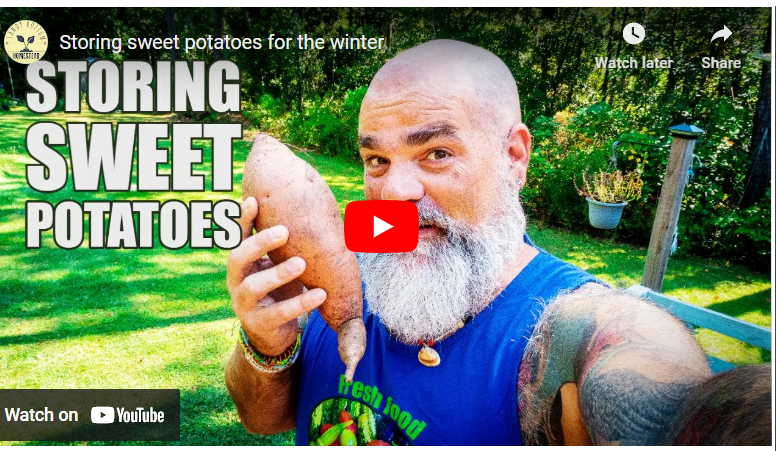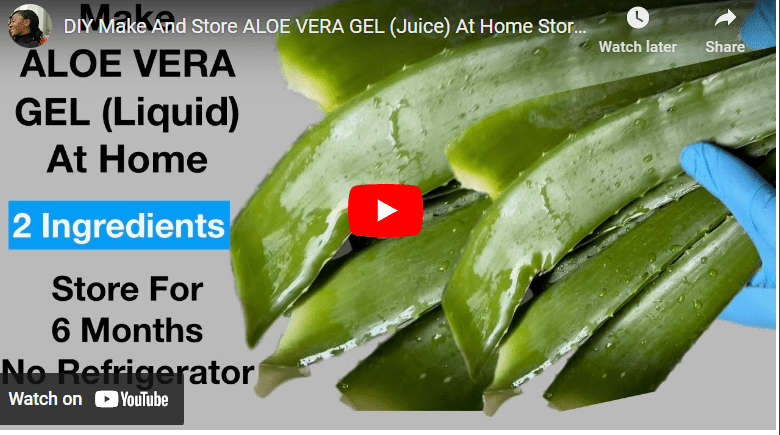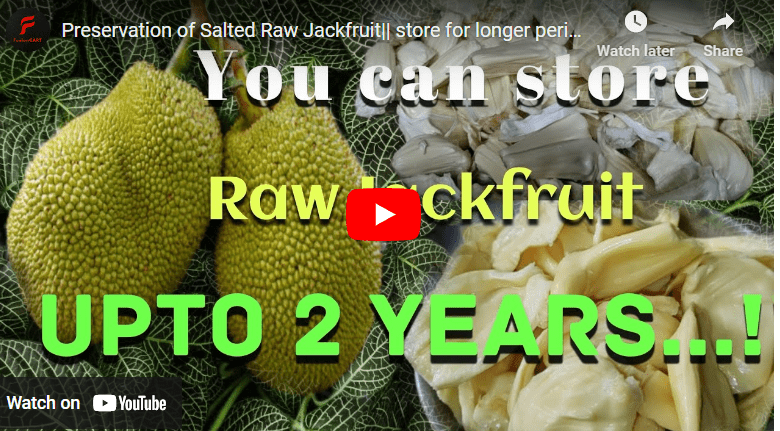Are you looking for ways to preserve ripe plantains for long-term storage? Ripe plantains are a versatile and delicious fruit that can be used in a variety of dishes, but they tend to spoil quickly if not consumed immediately.
Preserving ripe plantains is a great way to ensure that you always have them on hand, even when they are not in season.
We will cover everything from identifying ripe plantains to the different methods of preservation, and how to store your preserved plantains to ensure their longevity and quality.
Preserving ripe plantain for long–term storage is a simple process. Start by peeling the ripe plantain and cutting it into slices. Place the slices in single layers on a baking tray and freeze for about two hours. Once frozen, transfer the slices to an airtight container or freezer bag and store in the freezer for up to six months. For best results, use the frozen plantain within two weeks of thawing.
How To Preserve Ripe Plantain For Long Time Storage
Before we get into the preservation process, it’s important to understand what ripe plantains are and how to identify them.
Ripe plantains are sweeter and softer than unripe plantains and have a yellow or black skin. They can be eaten raw or cooked, and their sweetness makes them a popular ingredient in desserts.
Read Also: How To Preserve Rice from Weevils
To identify ripe plantains, look for those with yellow or black skin. The blacker the skin, the sweeter and softer the plantain will be. Avoid plantains with green skin, as they are not yet ripe enough for preservation.
Step 1: Preparing Ripe Plantains for Storage
Once you have identified ripe plantains, the next step is to prepare them for storage. Follow these steps:
Step 1 – Wash the plantains
Rinse the plantains under running water to remove any dirt or debris.
Read Also: How To Preserve Onions For Long Time Storage
Step 2 – Peel the plantains
Using a sharp knife, you will cut off the ends of the plantains. Then, make a shallow cut along the length of the plantain, taking care not to cut too deep. You should peel the skin away from the flesh of the plantain.
Step 3 – Slice the plantains
Cut the plantains into slices or chunks, depending on your preference. The slices should be approximately ¼ inch thick.
Read Also: How To Preserve Okra For Long Time Storage
Step 4 – Blanch the plantains
Blanching is the process of briefly boiling or steaming the plantains to stop enzyme activity and preserve their color and texture. To blanch plantains, bring a pot of water to a boil and add the plantain slices. Let them boil for 2-3 minutes, then remove them from the heat and drain them.
Step 2: Methods of Preservation
There are several different methods of preserving ripe plantains, including freezing, drying, and canning. Each method requires specific equipment and techniques. Here’s how to do each:
Read Also: How To Preserve Oha Leaves For Long Time Storage
#1. Freezing Method
Freezing is one of the easiest and most convenient ways to preserve ripe plantains. Follow these steps:
- Lay the blanched plantain slices in a single layer on a baking sheet and freeze them until solid.
- Once the slices are frozen, transfer them to a freezer-safe container or bag.
- Label the container with the date and contents and store the plantains in the freezer.
- Frozen plantains can last for up to 8 months in the freezer.
Read Also: How To Preserve Green Peppers For Long Time Storage
#2. Drying Method
Drying plantains is another way to preserve them for long-term storage. Follow these steps:
- Preheat your oven to 170°F.
- Place the blanched plantain slices on a baking sheet in a single layer.
- Place the baking sheet in the oven and leave the door slightly ajar to allow moisture to escape.
- Let the plantains dry for 8-10 hours, or until they are completely dry and crispy.
- Store the dried plantains in an airtight container in a cool, dry place.
- Dried plantains can last for up to 6 months if stored properly.
Read Also: How To Preserve Kiwi For Long Time Storage
#3. Canning Method
Canning is a bit more complex than freezing or drying, but it is a great way to preserve ripe plantains for long periods of time without the need for refrigeration or freezing. Follow these steps:
- Prepare a canning bath by filling a large pot with water and bringing it to a boil.
- Sterilize your canning jars and lids by boiling them in the canning bath for 10 minutes.
- Pack the blanched plantain slices into the sterilized jars, leaving ½ inch of headspace at the top.
- Pour boiling water over the plantains, leaving ½ inch of headspace at the top.
- Use a clean, damp cloth to wipe the rims of the jars to ensure a good seal.
- Place the lids on the jars and screw the bands on loosely.
- Lower the jars into the canning bath, making sure they are completely submerged in the water.
- Bring the water to a boil and let the jars process for 10-15 minutes, depending on your altitude.
- Remove the jars from the canning bath and let them cool completely.
- Check the lids to make sure they have sealed properly. If they have not sealed, you will need to reprocess the jars.
- Canned plantains can last for up to a year in a cool, dark place.
Read Also: How To Preserve Locust Beans For Long Time Storage
#4. Storing Preserved Plantains
Once you have preserved your plantains, it’s important to store them properly to ensure their longevity and quality. Here are some tips:
- Frozen plantains should be stored in a freezer-safe container or bag, labeled with the date and contents.
- Dried plantains should be stored in an airtight container in a cool, dry place, away from sunlight.
- Canned plantains should be stored in a cool, dark place, away from sunlight and heat.
Read Also: How To Preserve Green Peas For Long Time Storage
Benefits of Preserving Ripe Plantains
Preserving ripe plantains comes with a lot of benefits, some of which include:
- Cost-effectiveness: When plantains are in season, they tend to be cheaper than when they are out of season. Preserving ripe plantains helps to save money as you can buy them in bulk and store them for future use.
- Availability: Preserving ripe plantains makes them available year-round, regardless of whether they are in season or not.
- Convenience: Preserving ripe plantains saves time and effort as you do not have to keep going to the market to buy fresh ones every time you need them.
- Nutritional value: Ripe plantains are a good source of fiber, vitamins, and minerals. Preserving them ensures that these nutrients are retained and not lost due to spoilage.
Read Also: How to Preserve Irish Potatoes For Long Time Storage
Challenges of Preserving Ripe Plantains
Preserving ripe plantains can be challenging due to the following reasons:
- Ripeness: Ripe plantains are more difficult to preserve than unripe ones due to their softness and high sugar content, which can cause them to spoil quickly.
- Browning: Plantains tend to brown quickly when cut or exposed to air, which can affect their taste and appearance.
- Pests and insects: Pests and insects can also be a challenge when preserving ripe plantains, as they can infest the plantains and cause spoilage.
Read Also: How To Preserve Scent Leaf For Long Time Storage
Factors That Affect Ripe Plantain Preservation
The following factors can affect the preservation of ripe plantains:
- Ripeness: As previously mentioned, the ripeness of the plantain affects how well it can be preserved. Overripe plantains tend to spoil faster than slightly ripe ones.
- Temperature: The temperature at which the plantains are stored can affect their preservation. Plantains should be stored in cool and dry places to prevent spoilage.
- Moisture: Plantains should be kept dry as moisture can cause them to spoil quickly.
- Packaging: The packaging used for preserving plantains should be airtight to prevent air and moisture from entering and causing spoilage.
Read Also: How To Preserve Jackfruit For Long Time Storage
How to Reuse Preserved Ripe Plantain
Preserved ripe plantains can be reused in a variety of ways, such as:
- Fried plantains: Preserved plantains can be fried and served as a side dish or snack.
- Smoothies: Preserved plantains can be blended with other fruits to make smoothies.
- Baked goods: Preserved plantains can be mashed and used as a sweetener in baked goods such as cakes and bread.
- Stews and soups: Preserved plantains can be added to stews and soups to enhance their flavor and nutritional value.
Read Also: How To Preserve Lettuce For long Time Storage
How To Preserve Unripe Plantain Without Fridge
If you have unripe plantains that you would like to preserve without a fridge, here are the steps to follow:
- Choose unripe plantains that are still firm to the touch.
- Place the unripe plantains in a cool and dry place, away from direct sunlight.
- Cover the plantains with a dry cloth or paper towel to absorb any moisture.
- Check the plantains regularly for any signs of ripening or spoilage.
- Use the plantains before they ripen or start to spoil.
Read Also: How To Preserve Green Beans For Long Time Storage
How To Preserve Ripe Plantain Without Peeling
Preserving ripe plantains without peeling involves leaving the skin intact. Here’s how to do it:
- Choose ripe plantains that are firm to the touch and free from bruises or cuts.
- Wash the plantains thoroughly with clean water.
- Pat the plantains dry with a clean cloth or paper towel.
- Place the plantains in a cool and dry place, away from direct sunlight.
- Store the plantains in a basket or a container that allows air to circulate.
- Check the plantains regularly for any signs of spoilage.
- Use the plantains before they start to spoil.
Read Also: How to Preserve Ogbono For Long Storage
How To Preserve Ripe Plantain From Getting Spoilt
To preserve ripe plantains from getting spoiled, follow these steps:
- Choose ripe plantains that are firm to the touch and free from bruises or cuts.
- Wash the plantains thoroughly with clean water.
- Pat the plantains dry with a clean cloth or paper towel.
- Wrap each plantain individually with a plastic wrap or aluminum foil.
- Place the wrapped plantains in a cool and dry place, away from direct sunlight.
- Check the plantains regularly for any signs of spoilage.
- Use the plantains before they start to spoil.
Read Also: How To Preserve Lemon For Long Time Storage
How To Store Plantain In Fridge
If you prefer to store plantains in the fridge, here’s how to do it:
- Choose ripe plantains that are firm to the touch and free from bruises or cuts.
- Wash the plantains thoroughly with clean water.
- Pat the plantains dry with a clean cloth or paper towel.
- Wrap each plantain individually with plastic wrap or aluminum foil.
- Place the wrapped plantains in a plastic bag and seal it tightly.
- Place the bag of plantains in the fridge.
- Check the plantains regularly for any signs of spoilage.
- Use the plantains before they start to spoil.
Read Also: How To Preserve Ginger For Long Time Storage
How To Cook Frozen Plantains
If you have frozen plantains and would like to cook them, here’s what you need to do:
- Remove the frozen plantains from the freezer and allow them to thaw at room temperature.
- Once the plantains are thawed, peel them and slice them into the desired shape and size.
- Preheat the oven to 350°F.
- Place the plantains on a baking sheet and bake for 15-20 minutes or until golden brown.
- Alternatively, you can fry the plantains in hot oil until they are golden brown.
Read Also: How To Preserve Garlic For Long Time Storage
Plantain Recipes
There are several delicious plantain recipes you can try, including:
- Fried plantains: Simply slice ripe plantains and fry them in hot oil until they are golden brown.
- Plantain chips: Cut unripe plantains into thin slices and fry them in hot oil until they are crispy.
- Plantain fritters: Mix mashed ripe plantains with flour, sugar, and other ingredients, then deep-fry the mixture in hot oil.
- Plantain porridge: Cook ripe plantains with coconut milk, cinnamon, and nutmeg until they are soft and creamy.
- Plantain and black bean stew: Combine sliced plantains, black beans, tomatoes, and spices in a pot, then simmer until the plantains are tender.
- Mofongo: A traditional Puerto Rican dish made with mashed plantains, garlic, and pork cracklings.
Read Also: How to Preserve Tomatoes for Long Time Storage
How To Store Fried Plantains
If you have leftover fried plantains and would like to store them, here’s what you need to do:
- Allow the fried plantains to cool to room temperature.
- Place the plantains in an airtight container or a plastic bag.
- Store the container or bag of plantains in the fridge.
- The fried plantains will keep well in the fridge for up to 2-3 days
Read Also: How To Preserve Fresh Pepper For Long-Time Storage
Conclusion
Preserving ripe plantains is a great way to ensure that you always have them on hand, even when they are not in season. By following the steps outlined in this article, you can freeze, dry, or can your ripe plantains for long-term storage. Just remember to store your preserved plantains properly to ensure their longevity and quality.
